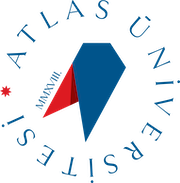| Week |
Subject |
Related Preparation |
| 1) |
introduction |
1. Speegle, Michael - Safety, Health, and Environmental Concepts for the Process Industry (2013, Cengage Learning, Inc.) |
| 2) |
General Information on Production |
1. Speegle, Michael - Safety, Health, and Environmental Concepts for the Process Industry (2013, Cengage Learning, Inc.) |
| 3) |
Production Type and Its Effect on Person |
1. Speegle, Michael - Safety, Health, and Environmental Concepts for the Process Industry (2013, Cengage Learning, Inc.) |
| 4) |
Production Areas and Living Areas |
1. Speegle, Michael - Safety, Health, and Environmental Concepts for the Process Industry (2013, Cengage Learning, Inc.) |
| 5) |
Work Home Relationship |
1. Speegle, Michael - Safety, Health, and Environmental Concepts for the Process Industry (2013, Cengage Learning, Inc.) |
| 6) |
Occupational Therapy of Production |
1. Speegle, Michael - Safety, Health, and Environmental Concepts for the Process Industry (2013, Cengage Learning, Inc.) |
| 7) |
Production Perspectives |
1. Speegle, Michael - Safety, Health, and Environmental Concepts for the Process Industry (2013, Cengage Learning, Inc.) |
| 8) |
Midterm Exam |
1. Speegle, Michael - Safety, Health, and Environmental Concepts for the Process Industry (2013, Cengage Learning, Inc.) |
| 9) |
Occupational Therapy Effect on Production Concepts |
1. Speegle, Michael - Safety, Health, and Environmental Concepts for the Process Industry (2013, Cengage Learning, Inc.) |
| 10) |
The Occupational Therapist's Production Approach |
1. Speegle, Michael - Safety, Health, and Environmental Concepts for the Process Industry (2013, Cengage Learning, Inc.) |
| 11) |
Differences Between Fabrication and Specially Developed Products |
1. Speegle, Michael - Safety, Health, and Environmental Concepts for the Process Industry (2013, Cengage Learning, Inc.) |
| 12) |
Production Site Experiences |
1. Speegle, Michael - Safety, Health, and Environmental Concepts for the Process Industry (2013, Cengage Learning, Inc.) |
| 13) |
Transformation Concept and Occupational Therapy |
1. Speegle, Michael - Safety, Health, and Environmental Concepts for the Process Industry (2013, Cengage Learning, Inc.) |
| 14) |
Virtual Production Systems |
1. Speegle, Michael - Safety, Health, and Environmental Concepts for the Process Industry (2013, Cengage Learning, Inc.) |
| 15) |
Recent Reviews and Overview |
1. Speegle, Michael - Safety, Health, and Environmental Concepts for the Process Industry (2013, Cengage Learning, Inc.) |
| 16) |
Final exam
|
1. Speegle, Michael - Safety, Health, and Environmental Concepts for the Process Industry (2013, Cengage Learning, Inc.) |
| |
Program Outcomes |
Level of Contribution |
| 1) |
Describes the basic concepts of basic medical sciences and occupational therapy and the role of occupational therapy in promoting and maintaining health. |
5 |
| 2) |
Describes assessment and intervention methods within the framework of occupational therapy-specific theories and models in individual and community-based interventions. |
5 |
| 3) |
Analyzes activities to reduce participation restrictions in individuals' performance areas, makes environmental arrangements, plans and implements interventions and preventive approaches that will increase performance capacity. |
|
| 4) |
Identifies and designs research needs on topics related to occupational therapy science and practice, collects data, analyzes and reports results. |
5 |
| 5) |
Takes responsibility independently and as a member of a multidisciplinary team within the framework of professional ethics and quality standards. |
|
| 6) |
With the awareness of lifelong learning, they follow accurate and up-to-date information, developments in science and technology, and use the information they acquire effectively. |
|
| 7) |
Uses verbal and written communication and language skills effectively, informs the individuals he/she serves, caregivers, the team he/she works with and other stakeholders. |
|
| 8) |
By observing the legal rights of the profession and the quality of occupational therapy services, they use their professional knowledge and skills with a professional identity and contribute to the well-being of the individuals they serve. |
|
| 9) |
Plans and implements individual and social approaches without discrimination, taking into account personal differences and their effects on activities, roles and participation. |
5 |
| 10) |
He/she is aware of the universal and societal effects and legal consequences of the practices related to his/her field. |
|
 BİLGİ PAKETİ / DERS KATALOĞU
BİLGİ PAKETİ / DERS KATALOĞU
